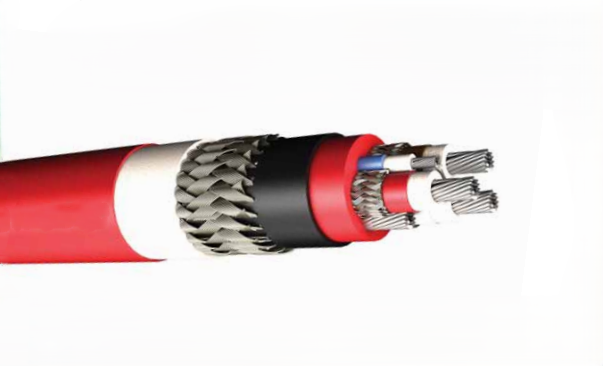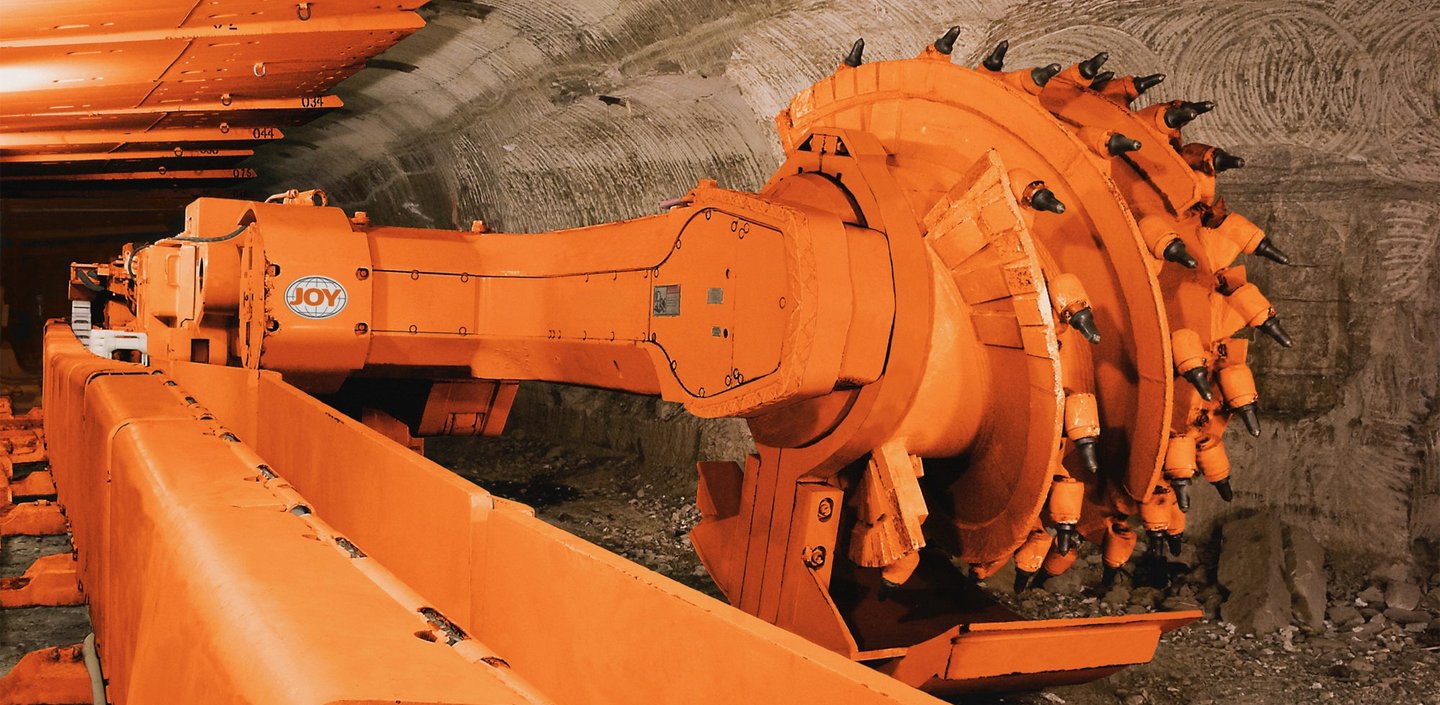ARMAFLEX Mining Cables
When you think about the harsh environment deep underground in Australian coal mines, power distribution becomes a critical challenge that demands specialised solutions. The combination of dust, moisture, vibration from heavy machinery, and the constant need to relocate equipment creates a perfect storm of electrical hazards that standard cables simply cannot handle. This is where ARMAFLEX mining cables step in as a purpose-built solution designed specifically for these demanding conditions. Understanding why these cables matter requires appreciating the unique challenges faced by mining operations across Australia. Underground coal mines operate in environments where safety isn't just important—it's literally a matter of life and death. Every piece of equipment, from massive longwall shearers to conveyor systems stretching kilometres underground, depends on reliable electrical power. When cables fail in these environments, the consequences extend far beyond simple power outages, potentially affecting ventilation systems, emergency communications, and critical safety equipment.
5/26/20257 min read
When you think about the harsh environment deep underground in Australian coal mines, power distribution becomes a critical challenge that demands specialised solutions. The combination of dust, moisture, vibration from heavy machinery, and the constant need to relocate equipment creates a perfect storm of electrical hazards that standard cables simply cannot handle. This is where ARMAFLEX mining cables step in as a purpose-built solution designed specifically for these demanding conditions.
Understanding why these cables matter requires appreciating the unique challenges faced by mining operations across Australia. Underground coal mines operate in environments where safety isn't just important—it's literally a matter of life and death. Every piece of equipment, from massive longwall shearers to conveyor systems stretching kilometres underground, depends on reliable electrical power. When cables fail in these environments, the consequences extend far beyond simple power outages, potentially affecting ventilation systems, emergency communications, and critical safety equipment.
ARMAFLEX Mining Cables


Where ARMAFLEX Mining Cables Excel in Real-World Applications
The Underground Coal Mining Environment
Picture the conditions inside an active coal mine: temperatures that fluctuate dramatically, air thick with coal dust, constant vibration from cutting and hauling equipment, and the ever-present threat of moisture seepage. Traditional electrical cables would fail within weeks under these conditions, but ARMAFLEX cables are engineered specifically to thrive where others fail.
The mechanical stress alone in these environments would destroy conventional cables. Consider a continuous miner cutting through a coal seam—the vibration travels through the ground and into every piece of equipment. Cables must flex constantly as equipment moves, yet maintain their electrical integrity through thousands of bend cycles. The abrasion from coal dust acts like sandpaper, gradually wearing away cable sheaths that aren't designed for this punishment.
Temporary and Permanent Power Distribution Systems
One of the most impressive aspects of ARMAFLEX cables lies in their versatility across different power system types. In permanent installations, such as main distribution panels and fixed conveyor systems, these cables provide long-term reliability that reduces maintenance costs and downtime. The cables maintain their performance characteristics even when installed in fixed positions for years, resisting the gradual degradation that affects lesser cables.
However, where ARMAFLEX truly shines is in temporary applications. Mobile equipment like shuttle cars, roof bolters, and portable ventilation fans require cables that can be repeatedly coiled, uncoiled, dragged across rough surfaces, and connected under difficult conditions. The flexibility of ARMAFLEX cables means they can handle this treatment without developing the internal breaks or insulation failures that would compromise safety.
Chemical and Environmental Resistance
Australian coal mines present a cocktail of environmental challenges that would quickly destroy inadequate cables. Water ingress from groundwater seepage or hydraulic systems creates corrosive conditions, while hydraulic fluids, lubricating oils, and chemical dust suppressants create a hostile environment for electrical equipment.
The GM5 elastomer outer sheath of ARMAFLEX cables acts as a barrier against these contaminants. Unlike rubber or PVC sheaths that can swell, crack, or become brittle when exposed to oils and chemicals, the elastomer construction maintains its integrity. This means the cable continues to protect its internal components even after months or years of exposure to conditions that would compromise other cable types.


Technical Specifications That Make the Difference
Voltage Capabilities and Power Distribution
ARMAFLEX cables are manufactured in three primary voltage ratings that correspond to different power distribution needs in mining operations. The 1.8/3.3 kV rating serves local equipment and smaller machinery, while the 3.6/6.6 kV rating handles medium-power applications like section power distribution. The highest rating of 6.6/11 kV manages main power feeds from surface substations to underground distribution points.
These voltage ratings aren't arbitrary numbers—they reflect the practical needs of mining electrical systems. Australian mining operations typically receive power from surface substations at higher voltages, then step down through transformers located underground. Each voltage level requires cables capable of handling not just the operating voltage, but also the transient voltages that occur during switching operations and fault conditions.
Construction Details That Ensure Reliability
The heart of any electrical cable lies in its conductor, and ARMAFLEX uses stranded tinned copper conductors that meet the stringent Class 5 flexibility requirements of VDE 0295. This might sound like technical jargon, but it represents a crucial design choice. Class 5 conductors use very fine copper strands, creating maximum flexibility while maintaining excellent electrical conductivity. The tinning process coats each copper strand with a thin layer of tin, preventing corrosion and ensuring long-term electrical performance.
The insulation system uses 3G3 compound that meets VDE 0207 Part 20 standards. This specialised insulation compound provides excellent dielectric properties while maintaining flexibility across a wide temperature range. In practical terms, this means the cable can handle the electrical stress of medium voltage applications while remaining flexible enough for repeated handling and installation in tight spaces.
Perhaps most importantly, each phase conductor includes its own electromagnetic screen made from tinned copper braid. This screening serves two critical functions: it contains the electromagnetic field generated by the current-carrying conductor, preventing interference with nearby control cables, and it provides a low-impedance path for fault currents, improving the performance of protective relaying systems.
Compliance and Safety Standards
The VDE 0250 Part 813 standard that governs ARMAFLEX cables represents decades of accumulated knowledge about mining cable requirements. This German standard has become internationally recognised because it addresses the specific challenges of underground mining environments that general-purpose cable standards simply don't consider.
Compliance with this standard means the cable has undergone rigorous testing for flame propagation, mechanical stress, chemical resistance, and long-term aging under mining conditions. When a cable carries the VDE 0250 Part 813 certification, mining engineers can have confidence that it will perform reliably in their specific application.



Addressing Common Mining Cable Challenges
Managing Mechanical Stress and Equipment Movement
The question of mechanical durability comes up frequently when mining engineers evaluate cable options. ARMAFLEX addresses this challenge through its multi-layer construction approach. The heavy-duty GM5 elastomer outer sheath provides the first line of defence against abrasion and impact. Beneath this, specialised bedding compounds cushion the internal components against mechanical stress.
The cable's construction allows for significant flexing and twisting without damage to internal components. This flexibility proves crucial when cables must be routed around corners, through cable trays, or around moving equipment. The combination of fine-stranded conductors and flexible insulation compounds means the cable can handle thousands of flex cycles without developing the internal fractures that eventually cause failures in less flexible designs.
Moisture and Chemical Protection Strategies
Underground mining environments expose cables to a constant threat of moisture and chemical contamination. Groundwater seepage, hydraulic fluid leaks, and chemical dust suppressants create conditions that would quickly penetrate and damage cables with inadequate protection.
The GM5 outer sheath provides exceptional resistance to water absorption and chemical penetration. Laboratory testing demonstrates that this material maintains its protective properties even after extended exposure to the oils, acids, and alkaline solutions commonly found in mining environments. This protection extends the cable's service life and maintains its electrical safety characteristics throughout years of service.
Electromagnetic Interference and Signal Integrity
Modern mining operations rely heavily on computerised control systems, communication networks, and instrumentation that can be severely affected by electromagnetic interference. When power cables generate electromagnetic fields, they can disrupt nearby control and communication cables, leading to equipment malfunctions or false alarm conditions.
The individual screening on each phase conductor of ARMAFLEX cables contains these electromagnetic fields, preventing them from affecting nearby sensitive equipment. This screening also improves the cable's performance during fault conditions by providing a controlled path for fault currents, enabling protective equipment to operate more reliably and quickly.
Flexibility for Dynamic Applications
The mining industry increasingly uses automated and mobile equipment that requires cables capable of constant movement. Longwall mining systems, for example, use equipment that must advance continuously as coal is extracted. Traditional rigid cables would quickly fail under these conditions, but ARMAFLEX cables are specifically designed for dynamic applications.
The Class 5 conductor construction and flexible insulation compounds allow these cables to handle the constant flexing required by moving equipment. This capability extends beyond simple flexibility to include resistance to the fatigue failures that eventually affect all cables subjected to repeated movement.
Maintenance and Repair Considerations
When cables fail underground, replacement can be extremely difficult and costly. Mining operations need cables that not only resist failure but can also be maintained and repaired when necessary. ARMAFLEX cables support localised repair techniques that allow damaged sections to be replaced without disturbing the entire cable run.
The cable's construction facilitates proper jointing and termination procedures, using standard techniques and materials available to mining electricians. This practical consideration becomes crucial when maintenance must be performed under difficult underground conditions with limited space and equipment.
The Broader Impact on Mining Safety and Efficiency
ARMAFLEX mining cables represent more than just an improvement in cable technology—they contribute to the overall safety and efficiency of mining operations. Reliable power distribution reduces the risk of equipment failures that could endanger workers or disrupt production. When electrical systems perform consistently, maintenance crews can focus on proactive rather than reactive maintenance, improving overall operational efficiency.
The flexibility and durability of these cables also support the trend toward more automated mining equipment. As mines increasingly rely on computerised systems and remote-controlled equipment, the electrical infrastructure must be capable of supporting these advanced technologies reliably.
From an economic perspective, the longer service life and reduced maintenance requirements of ARMAFLEX cables provide significant cost savings over their operational lifetime. While the initial cost may be higher than conventional cables, the reduced replacement frequency and lower maintenance requirements result in better total cost of ownership.
For Australian mining operations facing increasingly challenging geological conditions and stricter safety regulations, ARMAFLEX mining cables provide the reliable power distribution foundation that modern mining requires. Their combination of mechanical durability, electrical performance, and environmental resistance makes them an essential component of safe and efficient underground coal mining operations.


